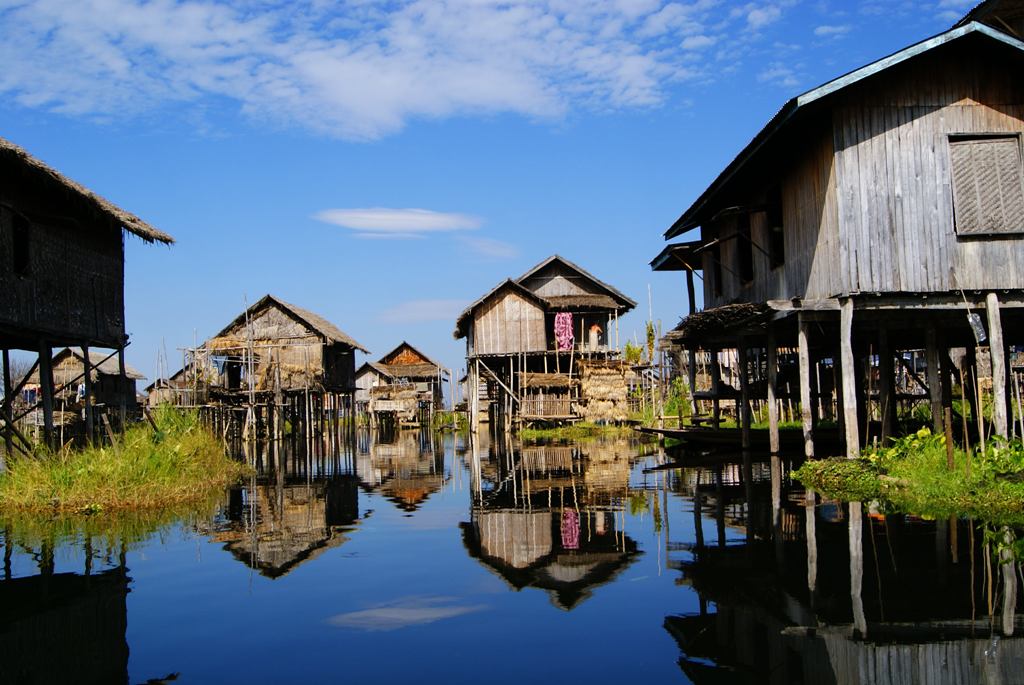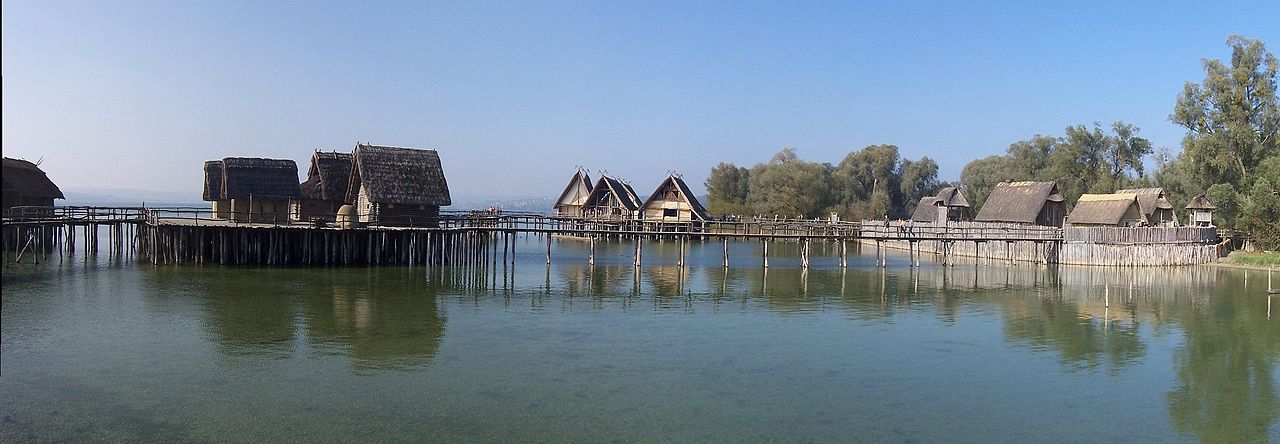Definition
A stilt house is a raised structure that is most commonly built above water, although it also may be built over dirt or sand. It is sometimes called a pile dwelling because it is supported by large stakes, known as piles, that are driven directly into the water or into the shoreline. These structures typically rest 10 - 12 feet (3.5 - 4 meters) off the ground to allow for high tide, and are designed to avoid flooding and water damage. Created from bamboo or other water-resistant timber and reinforced with deck boards and sometimes concrete, stilt houses can be found throughout the world. The use of stilt house building technology effectively reduces flood or water-logging risk. For houses built along the river, cylinder stilts will produce much less resistance against water flow and thus are more stable. While for houses built in areas where water flow is slower, square stilts have the advantage of easy constructing(Quora, What is stilt house?, accessed on Sept. 2016).
Co-benefits and impacts
Primarily regarded for its protection from flooding, there are many additional advantages to the stilt house. It is relatively easy to construct, and the design makes use of land that might be otherwise unsuitable for housing. The elevation serves to keep out vermin and offers protection from animals. The space beneath the house may be used for storage, in some cases, and some families can even fish from the front porch(wiseGEEK, What is a silt house?, accessed on Sept. 2016).
Definition (GR)
Ένα υπερυψωμένο κτίριο είναι μια ανυψωμένη κατασκευή που είναι συνήθως χτισμένη πάνω από το νερό, αν και μπορεί επίσης να κατασκευαστεί και πάνω από ρύπο ή άμμο. Μερικές φορές ονομάζεται κατοικία πασσάλου επειδή στηρίζεται σε μεγάλους πασσάλους, γνωστούς ως πυλώνες, που οδηγούνται κατευθείαν στο νερό ή στην ακτογραμμή. Αυτές οι κατασκευές συνήθως απέχουν 10 - 12 πόδια (3.5 - 4 μ.) από το έδαφος για να επιτρέψουν την υψηλή παλίρροια, και έχουν σχεδιαστεί για να αποτρέπεται η πλημμύρα και οι ζημιές από το νερό. Δημιουργούνται από μπαμπού ή άλλο αδιάβροχο ξύλο και ενισχύονται με σανίδες καταστρώματος και μερικές φορές με σκυρόδεμα. Tα υπερυψωμένα σπίτια συναντώνται σε όλο τον κόσμο. Η χρήση της τεχνολογίας υπερυψωμένων κτιρίων μειώνει αποτελεσματικά τον κίνδυνο πλημμύρας. Στα σπίτια που χτίζονται κατά μήκος ποταμού, οι ξύλινοι πάσσαλοι παράγουν πολύ λιγότερη αντίσταση στη ροή του νερού και τα καθιστούν πιο σταθερά, ενώ στα σπίτια που χτίζονται σε περιοχές όπου η ροή του νερού είναι πιο αργή, οι τετράγωνοι πάσσαλοι έχουν το πλεονέκτημα της εύκολης κατασκευής(Quora, What is stilt house?, accessed on Sept. 2016).
Co-benefits and impacts (GR)
Αρχικά αξιολογήθηκε για την ικανότητα προστασίας του από τις πλημμύρες. Ωστόσο υπάρχουν πολλά πρόσθετα πλεονεκτήματα για ένα υπερυψωμένο σπίτι. Είναι σχετικά εύκολο στην κατασκευή του και ο σχεδιασμός του χρησιμοποιεί γαιώδη υλικά, τα οποία σε άλλες περιπτώσεις μπορεί να είναι ακατάλληλα για στέγαση. Η ανύψωση του κτιρίου χρησιμεύει για να κρατάει μακριά από το σπίτι τα παράσιτα, ενώ παράλληλα προσφέρει προστασία από τα ζώα. Ο χώρος κάτω από το σπίτι μπορεί να χρησιμοποιηθεί για αποθήκευση, σε ορισμένες περιπτώσεις. Ενώ μερικές οικογένειες μπορούν ακόμη και να ψαρεύουν από την μπροστινή βεράντα(wiseGEEK, What is a silt house?, accessed on Sept. 2016).
Flood management measure
The parent measure, in terms of this measure being a subcategory of the parent one
Synonym of Flood management Measure
Last modified: Feb. 24, 2020, 6 p.m.


 Ελληνικά
Ελληνικά

